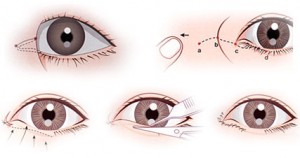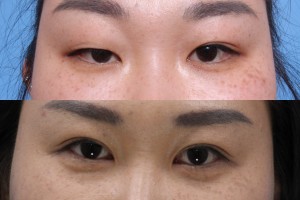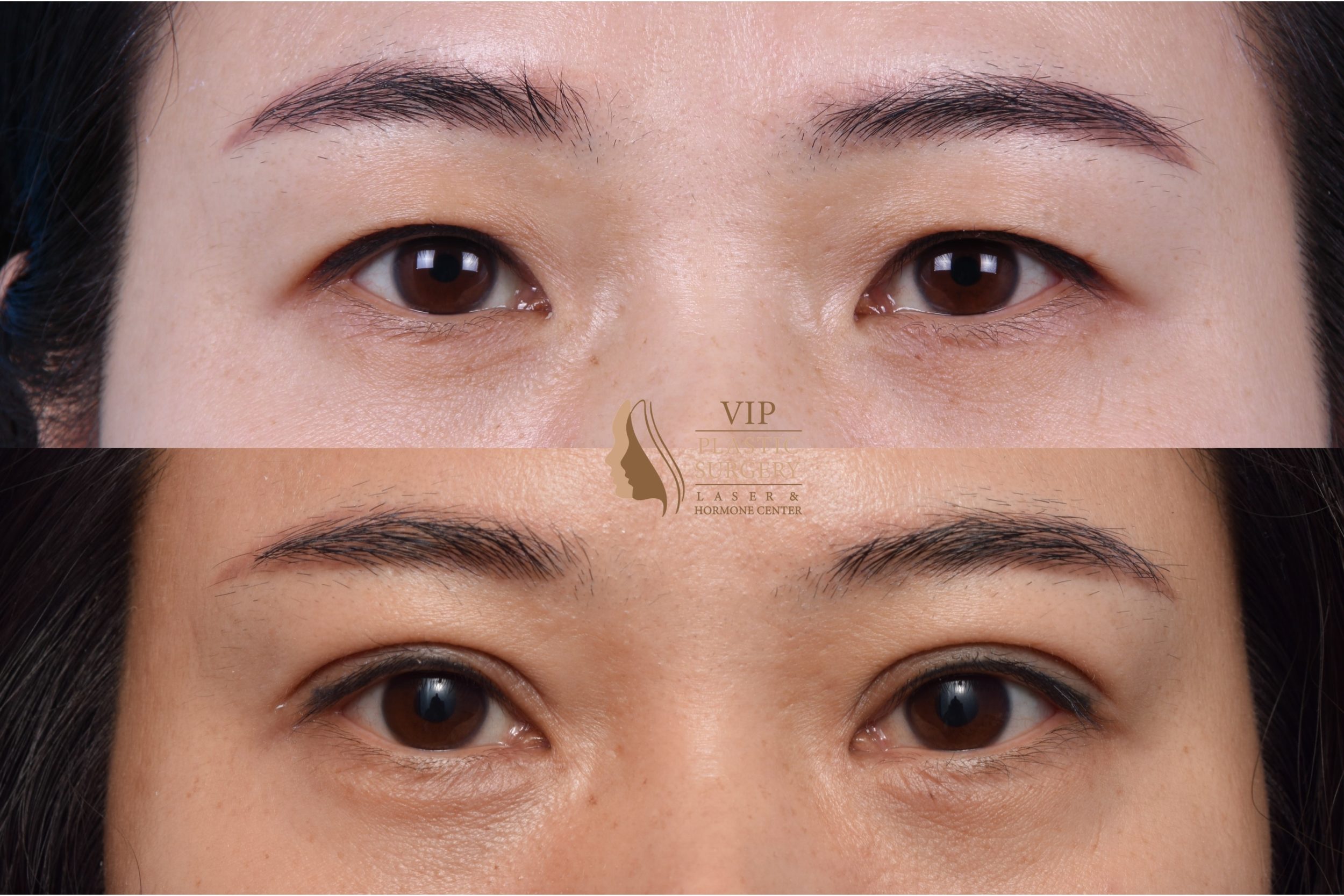
Double eyelid surgery is the most popular of all facial plastic surgery procedures performed on patients of Asian descent in the Orient and West.
It is an operation designed to create or enhance the upper eyelid crease. It will make eye bigger and the eyelids look more open. While most of the structured of the Asian eyelid are identical to those found in the Caucasian lid, their different structural alignment and relative lengths and thicknesses are sufficient to account for the highly characteristic appearance of the typical Asian upper lid, epicanthic fold, and crease.
Many plastic surgeons consider eyelid surgery to be the most demanding and least forgiving of all plastic surgery procedures. Patient satisfaction after eyelid surgery is surprisingly low, a reflection of the expertise required to perform these operations successfully. Results can vary tremendously with the training, skill, and experience of the doctor, and problems such as noticeable asymmetry, excessive scarring, misdirected eyelashes, unwanted accessory skin folds, hollowness, overdone or unnatural results, and a gradual loss of the crease are by no means rare.
Surgical Methods
Cutting Techniques
Among many different techniques, wide undermining the lid skin and aggressive removal muscle technique deliver most attractive result based on Dr. Choi’s 12,000 eyelid surgical experience.
- Requires incision
- Leave scar
- Healing and recovery takes longer
- Revision surgery may be difficult occasionally
- Requires skill from a surgeon
- Deliver permanent result
- Good for thick skin
- Good for fatty eye
- Able to prevent puffy crease
- Less fold failure rate
Non-Cutting Technique
There are numerous techniques and so far most reliable technique is DST (double sutures and twisting method) which was designed by the Japanese surgeon.
- No scar
- Quick healing
- Easy to revise
- A less skilled surgeon can perform
- Good for thin skin
- Good for younger patient
- Fold failure rate is higher than cutting technique
- Not good for thick skin
- Not good for fatty eye
- Not good for a saggy lid
Shape and Size of the Fold
Taper
This is most desirable to the patients who are looking for typical Asian appearance and very natural looking fold. 50% of natural crease belong to this style and young patients prefer to this style. Typically the size is somewhat smaller and usual size of the crease is less than 6mm. A non-cutting technique can deliver this kind of style of a crease.
Parallel
Somewhat larger than tapered crease and resemble Caucasian fold. It is somewhat larger than tapered look and also 50% natural crease belong to this style.
Medical Epicanthoplasty
Epicanthal fold is sometimes called as a Mongolian fold and it is small web-like skin covers the inner corner of the eye. Removing this fold is called Medial Epicanthoplasty and it enlarges the eyes in a horizontal direction. 10 to 15 % of the eyelid surgery requires this procedure. This procedure is recommended to someone’s horizontal length of the eye is less than 2.5 cm and if the size belongs to between 2.5- 2.7cm then occasional recommended. Anyone whose eye is larger than 2.7cnm then usually this procedure is not necessary. For general information, Caucasian eye size is somewhat 3cm in length.
There are numerous techniques such as V-Y advancement, W plasty, Z plasty, and modified Z plasty V-W plasty but due to the high incidence of the scarring, I recommend lazy S flap. Typically this procedure requires 30 minutes of operation time and it is usually performed with Asian Eyelid surgery. It will take 6 months until the scar is totally invisible.
This technique gives least chance of scar formation but every epicanthoplasty need to be performed with very careful consideration.



